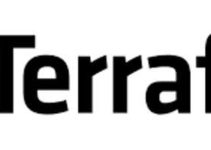In this Terraform Tutorials, we will explain the Steps to Install Terraform on Amazon Linux.
Prerequisite to Install Terraform on Amazon Linux:
- You must have Installed Amazon Linux Operating System on VM/Server.
- SSH access with sudo / root permission
- Internet access required to download the Terraform package.
Step 1: Download prerequisite to install Terraform
sudo yum install wget unzip
Ignore if it is already installed
Step 2: Download the Terraform on Amazon Linux
Method 1: Download Terraform with wget command.
[ec2-user@amzn1 ~]$ sudo wget https://releases.hashicorp.com/terraform/0.12.2/terraform_0.12.2_linux_amd64.zip --2020-02-29 12:24:10-- https://releases.hashicorp.com/terraform/0.12.2/terraform_0.12.2_linux_amd64.zip ... connected. HTTP request sent, awaiting response... 200 OK Length: 16018372 (15M) [application/zip] Saving to: ‘terraform_0.12.2_linux_amd64.zip.1’ terraform_0.12.2_linux_amd64.zip. 100%[=============================================================>] 15.28M --.-KB/s in 0.1s 2020-02-29 12:24:10 (106 MB/s) - ‘terraform_0.12.2_linux_amd64.zip.1’ saved [16018372/16018372] [ec2-user@amzn1 ~]$
Method 2: Download Terraform with curl command.
[ec2-user@amzn1 ~]$ curl -O https://releases.hashicorp.com/terraform/0.12.2/terraform_0.12.2_linux_amd64.zip
Step 3: Extract the downloaded terraform zip file
[ec2-user@amzn1 ~]$ sudo unzip ./terraform_0.12.2_linux_amd64.zip -d /usr/local/bin Archive: ./terraform_0.12.2_linux_amd64.zip inflating: /usr/local/bin/terraform [ec2-user@amzn1 ~]$
Step 4: Command to Verify Terraform Version
[ec2-user@amzn1 ~]$ terraform -v Terraform v0.12.2 [ec2-user@amzn1 ~]$
Step 5: Terraform help command
Sample Output:
[ec2-user@amzn1 ~]$ terraform -help Usage: terraform [-version] [-help] <command> [args] The available commands for execution are listed below. The most common, useful commands are shown first, followed by less common or more advanced commands. If you are just getting started with Terraform, stick with the common commands. For the other commands, please read the help and docs before usage. Common commands: apply Builds or changes infrastructure console Interactive console for Terraform interpolations destroy Destroy Terraform-managed infrastructure env Workspace management fmt Rewrites config files to canonical format get Download and install modules for the configuration graph Create a visual graph of Terraform resources import Import existing infrastructure into Terraform init Initialize a Terraform working directory output Read an output from a state file plan Generate and show an execution plan providers Prints a tree of the providers used in the configuration refresh Update local state file against real resources show Inspect Terraform state or plan taint Manually mark a resource for recreation untaint Manually unmark a resource as tainted validate Validates the Terraform files version Prints the Terraform version workspace Workspace management
Similarly, you can add “–help” flag to any of the terraform command to get more information.
Sample output:
[ec2-user@amzn1 ~]$ terraform --help plan Usage: terraform plan [options] [DIR] Generates an execution plan for Terraform. This execution plan can be reviewed prior to running apply to get a sense for what Terraform will do. Optionally, the plan can be saved to a Terraform plan file, and apply can take this plan file to execute this plan exactly. Options: -destroy If set, a plan will be generated to destroy all resources managed by the given configuration and state. -detailed-exitcode Return detailed exit codes when the command exits. This will change the meaning of exit codes to: 0 - Succeeded, diff is empty (no changes) 1 - Errored 2 - Succeeded, there is a diff -input=true Ask for input for variables if not directly set. -lock=true Lock the state file when locking is supported. -lock-timeout=0s Duration to retry a state lock. -no-color If specified, output will not contain any color. -out=path Write a plan file to the given path. This can be used as input to the "apply" command. -parallelism=n Limit the number of concurrent operations. Defaults to 10. -refresh=true Update state prior to checking for differences. -state=statefile Path to a Terraform state file to use to look up Terraform-managed resources. By default it will use the state "terraform.tfstate" if it exists. -target=resource Resource to target. Operation will be limited to this resource and its dependencies. This flag can be used multiple times. -var "foo=bar" Set a variable in the Terraform configuration. This flag can be set multiple times. -var-file=foo Set variables in the Terraform configuration from a file. If "terraform.tfvars" or any ".auto.tfvars" files are present, they will be automatically loaded.
This is the end of the tutorial, we explain the steps to install Terraform on Amazon Linux.
If you are done with setup terraform then check out the blog on Setup AWS VPC Peering with Terraform code.
Thanks for reading these articles, You’ll also like these articles.
Docker Engine Architecture and Stages of Containerization
TOP 12 Cloud based Software as a Service






